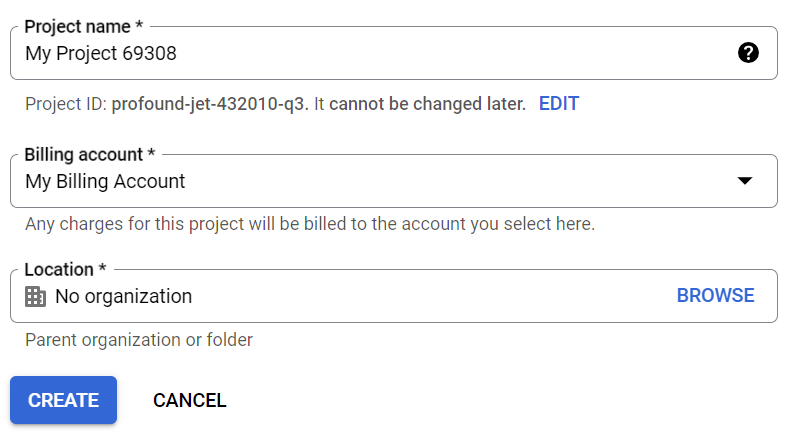Introduction to Google Indexing API
The Google Indexing API is a tool that was created by Google itself to allow developers and website owners to notify Google that they have included certain pages or content on their website. In the traditional indexing process, your new content is discovered by the Google crawler (bots), but with indexing API, you can update the content on your website and directly tell Google to speed up the indexing process.
Initially, It was developed to submit only the pages of job posting sites or live broadcast events’ data. Other websites that did not fall under these categories, used to face many issues after submitting the URLs to Google. The pages were not getting indexed, and some pages used to get deindexed. So, people started using the Google Indexing API to submit pages of their websites that had frequent updates to ensure timely indexing.
Benefits of Using Google Indexing API
- Site owners can directly notify Google when the new pages are added or removed.
- Faster indexing is possible with Google Indexing API.
- You can index up to 100 URLs in a batch.
- Your website content will be up-to-date, and this will improve your SEO rankings.
- With updated information, you can stay ahead of the competition.
- If your website has frequently changing content, like live streaming, then this tool is very useful.
- You can reduce the deindexing issue for your website URLs.
- You can remove the old and unnecessary URLs from Google’s index.
How Google Indexing API Works
The Google Indexing API can be used to tell Google that new pages have been added to your website or even when they are updated or removed. This way, Google will start a fresh crawl that will allow it to go through the content and index the pages faster than the regular indexing process. Here’s how you can get started with the API:
Setting Up Google Indexing API and Submitting URLs Using a Python Script
- You can start by creating an organization account in the Google Cloud Console (Google Cloud Console)
- Next, you have to create a new project in the Developer Console by clicking on ‘Select a project’ and choosing ‘New project’
- Enter the name of your project and click ‘Create’
- On the left side of the menu, click on ‘IAM & Admin’, then select ‘Service Accounts’
- Create a service account by entering a name
- The next step is to click on ‘Grant this service account access to project’
- Pick a role for the account and select ‘Owner’ by clicking on ‘Basic’ from the quick access menu.
- A new page will open up after clicking ‘Done’ and ‘Continue’.
- Save the email address from ‘Email’ and click on ‘Actions’ and ‘Manage Keys’
- From the ‘Add key’ section, click on ‘Create new key’ and save it as a JSON file.
- To activate the Google Indexing API, click on ‘Enable APIs & Services’ and click on Library.
- Type Inxeding API in search bar and select Web Search Indexing API and click on enable.
- To use the Indexing API, go to Google Search Console and click on ‘Settings’. Then click on ‘Users and permissions’ to add a new user from the ‘Add user’ section. Now enter the email you had saved and change the permission to ‘Owner’.
- Install the necessary Python libraries using pip, and create a Python script to authenticate and use the API.
- Open Command Prompt and type python to check for installation. If it’s install correctly it will recognize.
- Again open command prompt and type pip. If it’s not recognizing then type python, the right click and open file location and then right click on python 3.10 (64 bit) and agin click on open file location then double click on scripts and copy that patha and add it in environment variables.
- Open command prompt and add these 2 codes to install pip.
Code 1: Pip install oauth2client httplib2
Code 2: pip install pandas - Send an indexing request for either single or batch URLs
- Finally, run the Python script to index the URLs.








Integrating Google Indexing API
To implement the Google Indexing API, you need to enable the API and create a service account. Then you need to verify the site ownership in Google Search Console and get an access key for authentication. Use the following HTTP POST requests to notify Google if you add, update, or delete any pages (URLs):
- To update any page, use "URL_UPDATED" and send a HTTPS POST request to notify Google that you have added new pages.
- To remove unnecessary URLs, you can simply send the HTTPS POST request to https://indexing.googleapis.com/v3/urlNotifications:publish endpoint sing the "URL_DELETED"
- If you want to check indexing status with the Google Indexing API, send an HTTP request to https://indexing.googleapis.com/v3/urlNotifications/metadata endpoint.
Best Practices for Using Google Indexing API
- Always make sure to verify the site ownership on Google Search Console.
- Track your API usage and request additional quota by filling out a form.
- To improve the performance of the Google Indexing API, combine multiple URLs while sending an indexing request.
- When you’re sending a request for updating or deleting a page, use the correct endpoint like
- Keep updating your content by submitting URLs through Google Indexing API.
Troubleshooting Common Issues
- If you face ‘Authentication errors’, make sure that the service account credentials have the required permission.
- For ‘Quota limit’, track your API usage to not exceed the limit. You can request for additional quota as well.
- For ‘invalid URLs’, check if they URLs that you submitted are correct and accessible. If there is a 404 or 403 error, it might also contain URL issues.
- When you get ‘Incorrect Endpoints’, check if you are using the correct endpoints for any requests.
Google Indexing API vs. Traditional Indexing Methods
Both of these tools can make your content or website visible on Google, but they have many differences:
- Efficiency: Google API is good for sites that display frequently updated information like live streams, job postings, etc. Traditional methods are not useful for such sites because they might miss or delay the indexing.
- Speed and Control: The API allows almost immediate indexing and you can control when and how many URLs are indexed. Traditional indexing fully relies on Google’s schedule, and sometimes it can take days or even weeks.
- SEO: If your URLs are indexed faster, it can improve the SEO ranking of your website, which is possible with Google API and not the traditional indexing method.
Conclusion
The Google Indexing API is an important tool for website owners who are looking to improve the efficiency of the indexing of their pages, especially for content that frequently changes. This tool allows you to directly communicate with Google for faster updates, which can lead to improved search visibility and rankings. This can help you keep your content fresh and stay ahead of your competitors.





